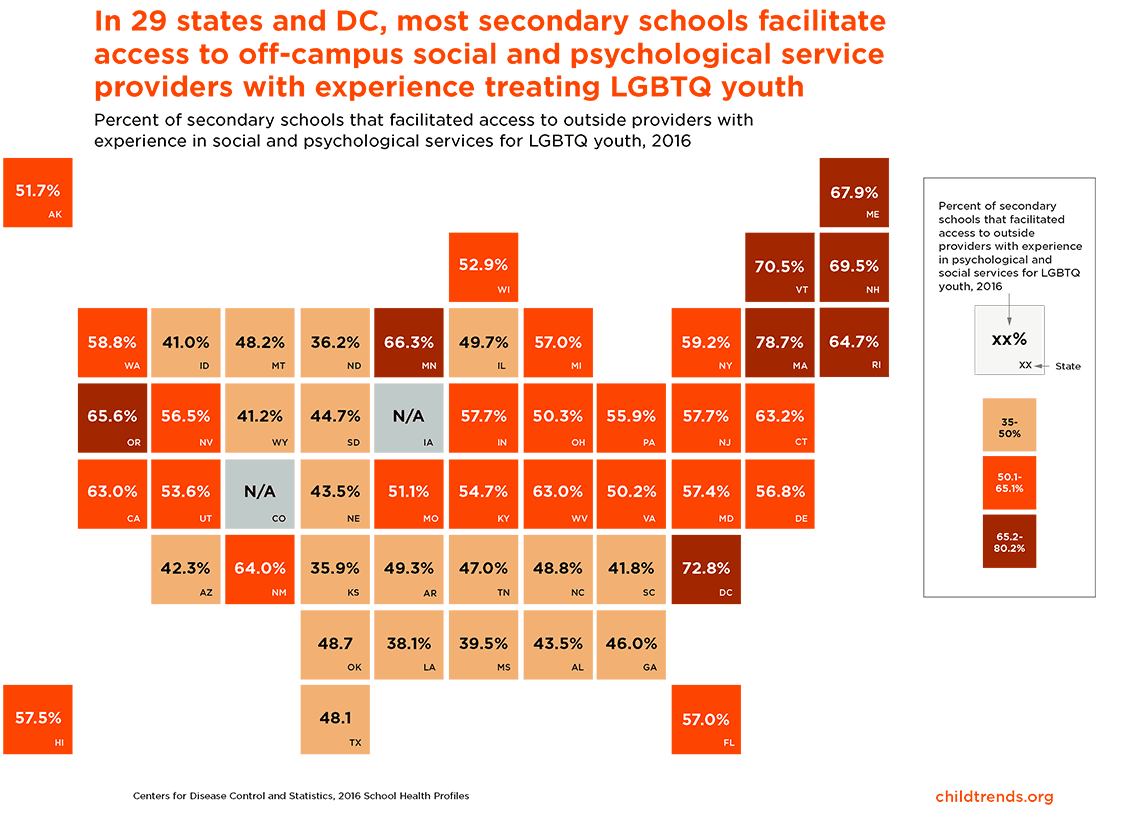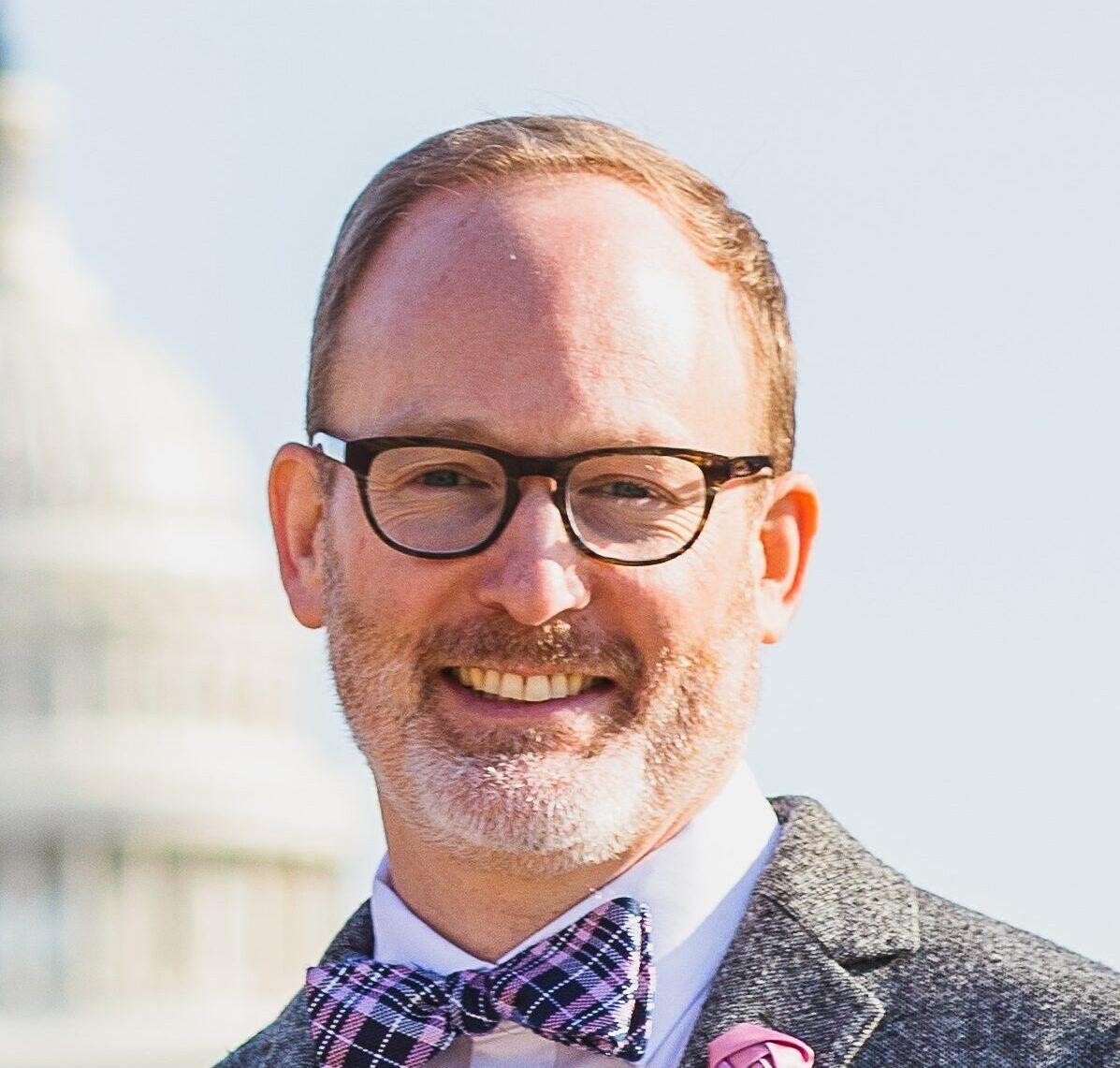In 29 states and DC, most high schools facilitate access to mental health providers with experience treating LGBTQ youth
This blog has been updated here to reflect the most recent data and new analysis.
According to the most recently available data from the Centers for Disease Control and Prevention (CDC), over 50 percent of secondary schools in 29 states and the District of Columbia facilitated access for students to off-campus social and psychological service providers with experience treating LGBTQ youth. In 19 states, less than half of secondary schools reported facilitating such services. Kansas had the lowest percentage of secondary schools facilitating these services for LGBTQ students (35.9 percent), while Massachusetts had the highest percentage (78.7). Data are not available for Colorado and Iowa.

Nationally representative data suggest that about half of Americans will experience a mental health challenge at some point in their lives, with onset of most of these challenges beginning in childhood/adolescence. Of particular concern are recent upticks in the percentage of youth who report symptoms of depression or thoughts of suicide. Data from the CDC’s Youth Risk Behavior Survey (YRBS) demonstrate that—driven largely by experiences of stigma and discrimination related to LGBTQ youth’s sexual orientation and/or gender identity—their risk of suicide can be as much as five times higher than among their straight, cisgender peers. Approximately half of females who identify as lesbian or bisexual reported seriously considering a suicide attempt in the past 12 months, compared to 16.9 percent of their straight, cisgender peers. A similar, though less dramatic, pattern holds for males: 42.5 percent of males who identify as bisexual and 30.3 percent who identify as gay reported seriously considering a suicide attempt, compared to 10.2 percent of their straight, cisgender peers. Data from 10 states and nine large urban districts that piloted a question about transgender identity found that 43.9 percent of trans students reported seriously considering a suicide attempt in the past 12 months.
LGBTQ youth who seek treatment for mental health concerns do not always encounter the support they need. For example, clinicians may deny services or discourage LGBTQ individuals from discussing their sexual or gender identity. In extreme cases, LGBTQ youth may even be exposed to “conversion therapy” in an attempt to change their identity to one that is heterosexual and cisgender. To ensure that LGBTQ youth feel emotionally and physically safe enough to engage in mental health services, they must have access to mental health providers who affirm their identities. The Substance Abuse and Mental Health Services Administration of the U.S. Department of Health and Human Services has recognized the importance of providing culturally and linguistically competent mental health services to LGBTQ youth, which have been outlined in a Practice Brief.
Educators increasingly recognize that schools have a key role to play in partnering with mental health providers to ensure that youth with unmet mental health needs receive referrals to appropriate mental health services. While the number of campuses with school-based mental health services is increasing, not all school counselors have the skills and knowledge required to work effectively with LGBTQ students. A recent study found that many school counselors feel ill-equipped to work effectively with LGBTQ students. Therefore, schools must continue to expand efforts to establish referral networks with mental health professionals in the community—especially in states where such practices are uncommon—to ensure that LGBTQ youth have access to affirming mental health services.
Related Content
© Copyright 2025 ChildTrendsPrivacy Statement
Newsletter SignupLinkedInYouTubeBlueskyInstagram